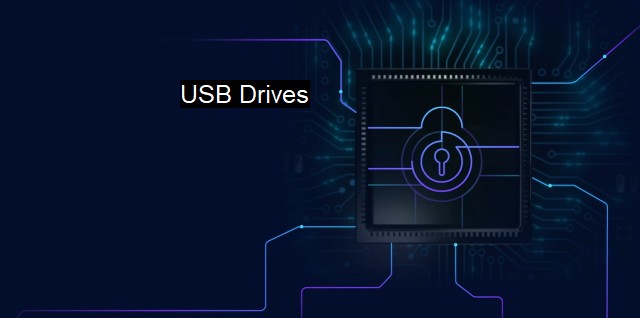What are USB Drives?
Uncovering the Ins and Outs of USB Drives: Protecting Your Networks from Malware Threats
USB drives, commonly referred to as flash drives or thumb drives, are a variety of data storage device that incorporates flash memory with an integrated Universal Serial Bus (USB) interface. These drives are typically compact, portable, durable, and frequently used to transfer data between devices or as reliable backups compared to traditional physical disks.In the context of cyber security, USB drives present numerous risks and benefits. They allow easy and rapid data transportation between computers, eliminating the need for an internet connection. This makes them virtually immune to conventional network-based attacks. Witnessing the nature of their design and functionality, they seem to be inherently secure, but in reality, these devices have become an avenue for numerous security threats.
One of the major security threats posed by USB drives is the spread of malicious software or malware. This software usually operates covertly, performing or enabling unauthorized activities within the system it infects. Malware entities often target USB drives because they are generally considered safe and are widely used for data transportation, making these devices an efficient vector for rapid and wide-scale distribution.
a well-known type of malware that USB drives often convey is the autorun virus. An autorun virus operates by modifying the file system of the infected computer so that specific software runs automatically when a drive is connected. Usually, this software is malicious and presents substantial risks to the system's security. Other examples are worms, trojans, ransomware and spyware. All these can be hidden, duplicated or disguised inside the USB drives to gain unauthorized access into a system, phishing personal data, causing damages to computer setup or worse, taking over the control of the operations in the system.
USB drives can also be involved in direct execution attacks such as 'BadUSB,' which are considerably more sophisticated than basic malware attacks. These attacks exploit the fact that a USB drive's firmware, the deep-rooted software that instructs it how to function, can be maliciously reprogrammed. It gives cybercriminals notable amounts of control over a victim's system and is extremely hard to detect or counteract, rendering existing security software virtually useless against it.
Therefore, adopting good cyber hygiene practices is essential when it comes to protecting from these potential issues. The fundamental defense against risks potentially introduced by USB drives is to ensure that your antivirus software is always up-to-date. Antivirus software monitors your computer for signs of malicious programs and promptly either deletes or quarantine them when they're found. Prior to using a USB drive, scan it with your antivirus software. It will help catch and eliminate any potential threats that may have slipped past other safety measures.
Never open a USB drive from an unknown source, no matter how tempting it might be. Cybercriminals have been known to leave infected USB drives in obvious locations, hoping that someone will pick one up and connect it to a computer. with a rise in the concept BYOD (bring your own device) in many workplaces, companies should also have policies that regulate the use of USB drives by their employees. Remember, all it can take is one infected device to cripple an entire network.
While the value of these devices is undeniable, acknowledging the potential USB cybersecurity risks and mitigating them is important. By integrating defensive layers like firewall protection, intrusion detection, antivirus scanning, and exercise healthy cybersecurity habits, users can enjoy the convenience of USB drives without leaving their systems potentially vulnerable.

USB Drives FAQs
What is a USB drive and how does it work for cybersecurity purposes?
A USB drive is a small, portable data storage device that can be used to transfer files from one computer to another. In terms of cybersecurity, USB drives pose a risk because they can be used to introduce viruses, malware, and other malicious software onto a computer.What are some of the risks associated with using USB drives for cybersecurity purposes?
USB drives can be used to introduce viruses and malware onto a computer, which can compromise the security of the system. Additionally, USB drives can be lost or stolen, which can also result in the loss of sensitive data.How can I protect my computer from viruses and malware introduced via USB drives?
One way to protect your computer from viruses and malware introduced via USB drives is to use antivirus software that is designed to detect and remove malicious software. Additionally, it is important to only use USB drives from trusted sources and to scan them for viruses and malware before using them on your computer.What are some best practices for using USB drives in a cybersecurity context?
Some best practices for using USB drives in a cybersecurity context include encrypting the data on the drive, using strong passwords to protect the drive, and not leaving the drive plugged into your computer when it is not in use. Additionally, it is important to only use USB drives from trusted sources and to scan them for viruses and malware before using them on your computer.| | A | | | B | | | C | | | D | | | E | | | F | | | G | | | H | | | I | | | J | | | K | | | L | | | M | |
| | N | | | O | | | P | | | Q | | | R | | | S | | | T | | | U | | | V | | | W | | | X | | | Y | | | Z | |
| | 1 | | | 2 | | | 3 | | | 4 | | | 7 | | | 8 | | |||||||